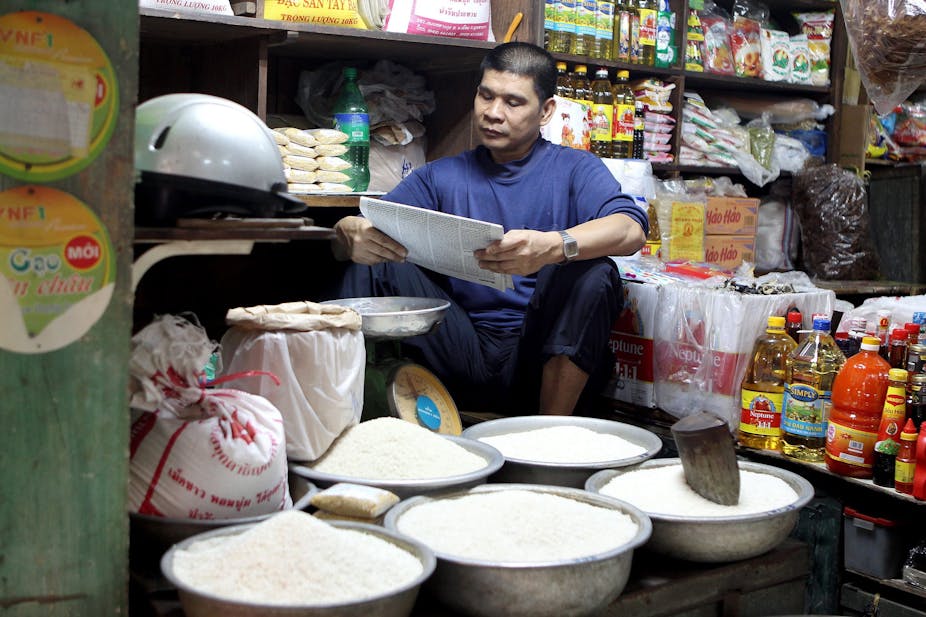Eating white rice on a regular basis could substantially increase the risk of developing type 2 diabetes, according to an assessment that reports a greater prevalence of the condition in Asian studies.
Researchers who analysed the results of four studies involving 352,384 people from China, Japan, the United States and Australia found that each serving per day of white rice, or 158g, increased the risk of diabetes by 11% across the overall population.
All participants were free from diabetes at the start of the studies. More than 13,000 developed the condition.
In the studies conducted in China and Japan, people who ate the most white rice were 55% more likely to develop the disease than those who consumed the least. In the US and Australia, the most voracious consumers of white rice were only 12% more likely to get diabetes than people who ate the least.
The findings are published in the British Medical Journal.
Unlike white rice, which is highly refined and predominantly starch, brown rice has more fibre, magnesium and vitamins, and a lower glycaemic index - a measure of sugar content.
The team from the Harvard School of Public Health reported that Asian people tended to have a much higher white rice intake than participants in the West, averaging three to four servings a day compared with one or two servings per week. The results also showed that Asian people have a higher chance of developing type 2 diabetes, not just because they consume more white rice, but because they have experienced a recent and sudden change in their diet.
“The recent transition in nutrition characterised by dramatically decreased physical activity levels and much improved security and variety of food has led to increased prevalence of obesity and insulin resistance in Asian countries,” the authors wrote. “Although rice has been a staple food in Asian populations for thousands of years, this transition may render Asian populations more susceptible to the adverse effects of high intakes of white rice.”
Qi Sun, a Research Associate in the Department of Nutrition at the Harvard School of Public Health, told AFP: “What we’ve found is white rice is likely to increase the risk of Type 2 diabetes, especially at high consumption levels such as in Asian populations.
"But at the same time people should pay close attention to the other things they eat. It’s very important to address not just a single food but the whole pattern of consumption.”
Bruce Neal, Senior Director at the George Institute for Global Health, University of Sydney, said the research was important because it shed new light on the link between diet and diabetes. “The authors bring a new level of rigour to efforts to answer the question of the possible effect of higher consumption of white rice,” Professor Neal said.
However it was impossible to say whether, and to what extent, other “confounding” factors may have contributed to the development of diabetes in study participants.
“Although the findings of the current study are interesting they have few immediate implications for doctors, patients, or public health services and cannot support large scale action. Further research is needed to develop and substantiate the research hypothesis.”
Dr Sun agreed that the study had limitations. For example, the researchers did not have access to details about what the volunteers ate in addition to rice.
“I don’t think I can put forward a 100% confirmed case, given that this is a meta-analysis of four original studies,” he said. “But I see a consistency across these studies, and there is biological plausibility that supports the association between white rice consumption and diabetes.”

